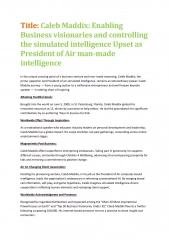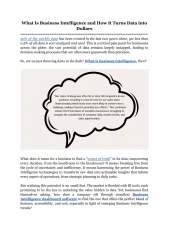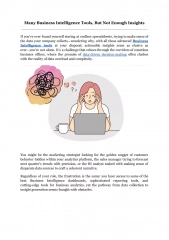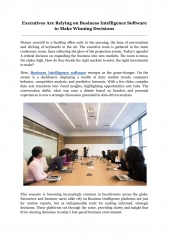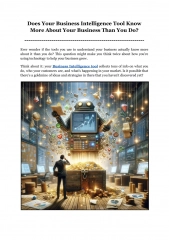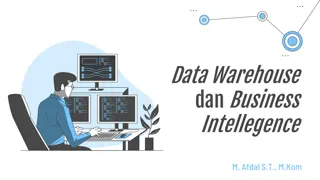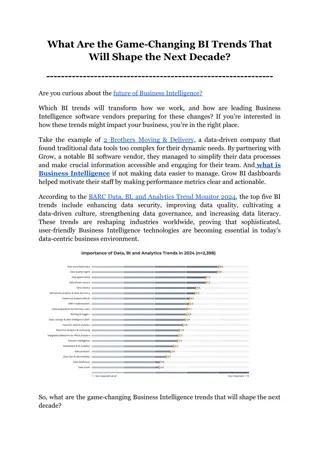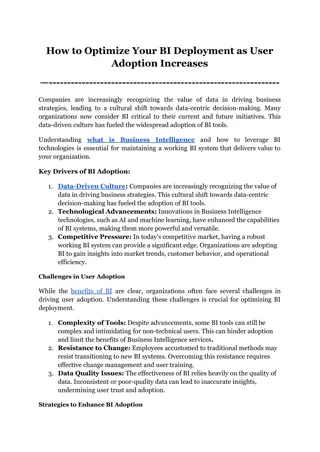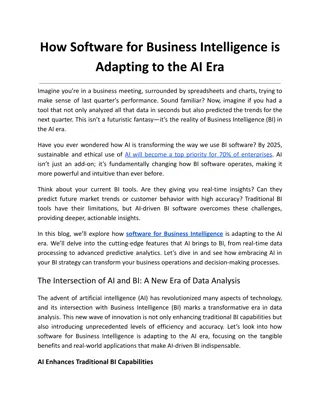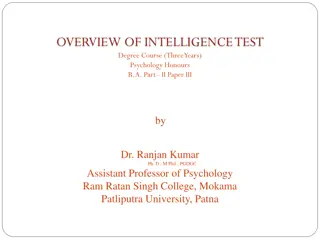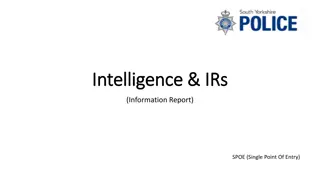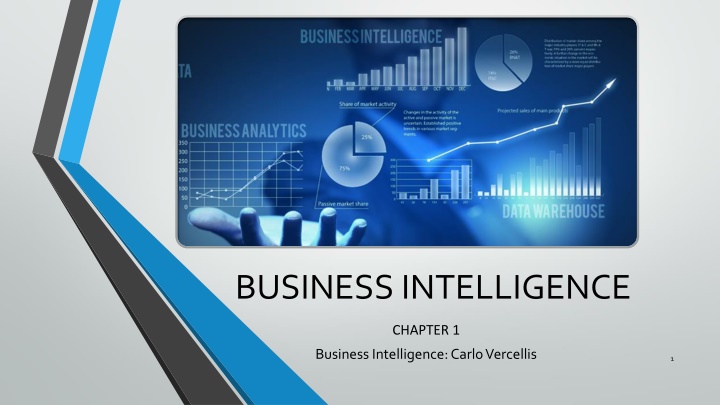
Business Intelligence Essentials: Mathematical Models, Decision Making, and Architectures
Explore the fundamentals of business intelligence, including the use of mathematical models for decision-making processes, key components of BI systems, and various architectures. Understand the benefits and enabling factors of BI projects in today's data-driven landscape.
Download Presentation

Please find below an Image/Link to download the presentation.
The content on the website is provided AS IS for your information and personal use only. It may not be sold, licensed, or shared on other websites without obtaining consent from the author. If you encounter any issues during the download, it is possible that the publisher has removed the file from their server.
You are allowed to download the files provided on this website for personal or commercial use, subject to the condition that they are used lawfully. All files are the property of their respective owners.
The content on the website is provided AS IS for your information and personal use only. It may not be sold, licensed, or shared on other websites without obtaining consent from the author.
E N D
Presentation Transcript
BUSINESS INTELLIGENCE CHAPTER 1 Business Intelligence: Carlo Vercellis 1
Todays Scenario: Low cost data storage technologies Availability of internet Heterogeneous data Need to convert data into information Definition of BI:- Set of mathematical models and analysis methodologies that exploit the available data to generate information and knowledge useful for complex decision making process. 2 Sudha Bhagavatheeswaran, Department of Information Technology, SIES College of Arts, Science & Commerce (Autonomous)
DECISIONS Eg 1:- Retention in mobile industry Eg 2:- Logistics Planning EFFECTIVE AND TIMELY 3 Sudha Bhagavatheeswaran, Department of Information Technology, SIES College of Arts, Science & Commerce (Autonomous)
Benefits of a Business Intelligence System 4 Sudha Bhagavatheeswaran, Department of Information Technology, SIES College of Arts, Science & Commerce (Autonomous)
5 Sudha Bhagavatheeswaran, Department of Information Technology, SIES College of Arts, Science & Commerce (Autonomous)
The role of mathematical models 6 Sudha Bhagavatheeswaran, Department of Information Technology, SIES College of Arts, Science & Commerce (Autonomous)
Business Intelligence Architectures 7 Sudha Bhagavatheeswaran, Department of Information Technology, SIES College of Arts, Science & Commerce (Autonomous)
Main Components of BI System 8 Sudha Bhagavatheeswaran, Department of Information Technology, SIES College of Arts, Science & Commerce (Autonomous)
Enabling factors in BI projects Technologies Analytics Human Resources 9 Sudha Bhagavatheeswaran, Department of Information Technology, SIES College of Arts, Science & Commerce (Autonomous)
10 Sudha Bhagavatheeswaran, Department of Information Technology, SIES College of Arts, Science & Commerce (Autonomous)
Development of a business intelligence system 11 Sudha Bhagavatheeswaran, Department of Information Technology, SIES College of Arts, Science & Commerce (Autonomous)
Ethics and Business Intelligence Usage of improper data or violation of right to privacy not to be tolerated. Guard against political and economic influence Questions:- 1. Is it right to develop an optimization model on distributing costs on an international scale in order to circumvent the tax systems of certain countries? 2. Is it legitimate to make a decision on the optimal position of the tank on a vehicle to minimise costs, which may cause serious harm to passengers in event of collision? 12 Sudha Bhagavatheeswaran, Department of Information Technology, SIES College of Arts, Science & Commerce (Autonomous)

